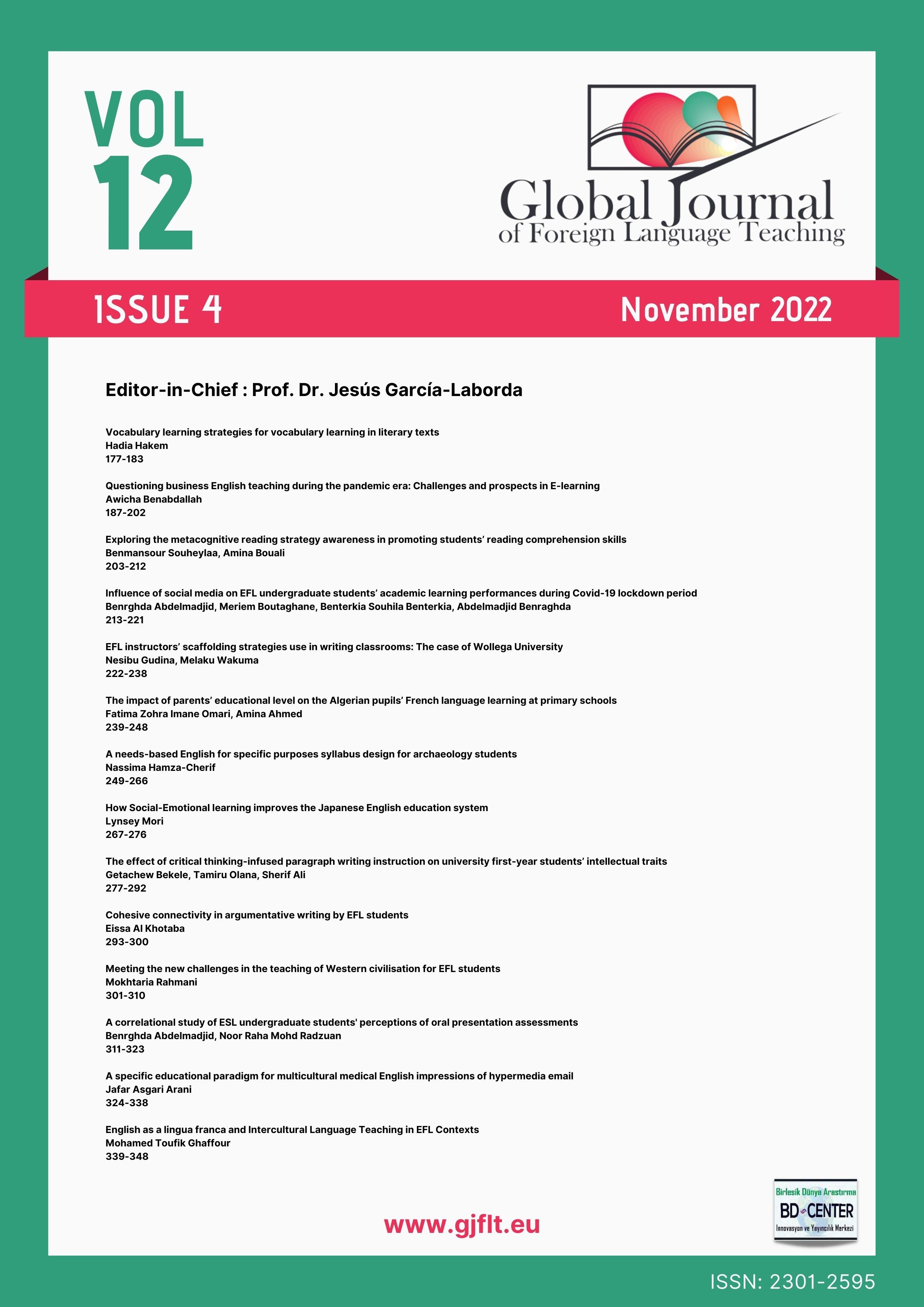Cohesive connectivity in argumentative writing by EFL students
Main Article Content
Abstract
In a study carried out on EFL students’ translation skills, it was found that they commonly encounter problems related to concepts’ structural organization in the translated text. This research aimed to examine cohesion and coherence in argumentative writing by EFL students at the University of Tabuk for the academic year 2022/2023. The theoretical framework of the study is based on Halliday and Hasan's (1976) theory of coherence and cohesion shifts in translation. This qualitative study included 15 participants in their third-year EFL students from the Department of Languages and Translation at the University of Tabuk in Saudi Arabia. Participants were selected purposively. Argumentative written texts were the instrument used to collect data in this study. Results showed that students encountered cohesion and coherence problems in achieving written texts’ unity, particularly in assigning their concepts and implementing appropriate cohesive signals, punctuation, and spelling issues.
Keywords: Argumentative writing; cohesion; coherence; EFL; writing
Downloads
Article Details

This work is licensed under a Creative Commons Attribution-NonCommercial-NoDerivatives 4.0 International License.
Authors who publish with this journal agree to the following terms:- Authors retain copyright and grant the journal right of first publication with the work simultaneously licensed under a Creative Commons Attribution License that allows others to share the work with an acknowledgement of the work's authorship and initial publication in this journal.
- Authors are able to enter into separate, additional contractual arrangements for the non-exclusive distribution of the journal's published version of the work (e.g., post it to an institutional repository or publish it in a book), with an acknowledgement of its initial publication in this journal.
- Authors are permitted and encouraged to post their work online (e.g., in institutional repositories or on their website) prior to and during the submission process, as it can lead to productive exchanges, as well as earlier and greater citation of published work (SeeThe Effect of Open Access).
